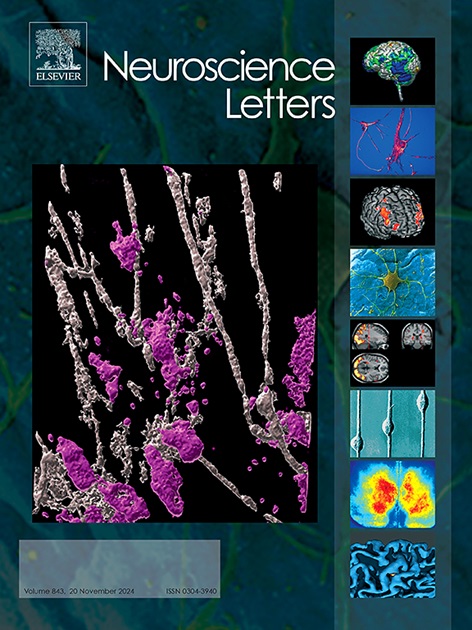在Epm2a-/- Lafora病小鼠模型中,锂加剧了Lafora体的形成
IF 2
4区 医学
Q3 NEUROSCIENCES
引用次数: 0
摘要
拉福拉病(Lafora disease, LD)是一种致死性的青少年神经退行性癫痫,由于过长支糖原(Lafora body, LBs)的积累,由缺乏拉福拉素或其相互作用的伴侣malin引起。虽然去甲素-马林复合物如何调节糖原链长度尚不清楚,但已知下调糖原链延长酶糖原合成酶可阻止LB的形成。锂是神经精神疾病的长期治疗方法。锂最近被证明通过一种未知的途径导致大鼠大脑中的糖原合成酶磷酸化(即抑制)。我们测试了锂是否能阻止去甲素缺乏LD小鼠LB的形成。我们发现,在这些小鼠中,锂导致糖原合成酶去磷酸化(即激活),并且100%的治疗小鼠的心脏和40%的治疗小鼠的大脑中LBs增加。后者的大脑都很虚弱,相比之下,60%的大脑中LBs没有增加。这些结果通常对治疗从啮齿动物到人类的可翻译性具有警示性,因为基本机制尚不清楚。仅在虚弱小鼠中LB形成增加表明LD中存在自我延续过程。最后,锂明显影响糖原代谢,其结果类似于干扰素-马林复合物的紊乱。了解锂在糖原代谢中的作用可能有助于理解去甲肾上腺素-malin和LD的机制。本文章由计算机程序翻译,如有差异,请以英文原文为准。
Lithium exacerbates Lafora body formation in the Epm2a-/- Lafora disease mouse model
Lafora disease (LD) is a fatal neurodegenerative epilepsy of teenagers due to accumulations of overlong-branched glycogen (Lafora bodies, LBs) and caused by deficient laforin or its interacting partner malin. While how the laforin-malin complex regulates glycogen chain lengths is unknown, it is known that downregulating the glycogen chain-elongating enzyme glycogen synthase prevents LB formation. Lithium is a longstanding treatment for neuropsychiatric diseases. Lithium was recently shown to lead to glycogen synthase phosphorylation (i.e. inhibition) in rat brains through an unknown pathway. We tested whether lithium can prevent LB formation in laforin-deficient LD mice. We found that in these mice lithium leads to glycogen synthase dephosphorylation (i.e. activation), and increased LBs in hearts of 100% and brains of 40% of treated mice. The latter were all sickly compared to the 60% in whose brains LBs did not increase. These results are generally cautionary regarding therapeutic translatability from rodents to humans where basic mechanisms are unknown. Increased LB formation only in frail mice suggests existence of self-perpetuating processes in LD. Finally, lithium clearly influences glycogen metabolism with outcomes similar to disturbances of the laforin-malin complex. Understanding lithium’s action in glycogen metabolism may aid the understanding of the mechanisms of laforin-malin and LD.
求助全文
通过发布文献求助,成功后即可免费获取论文全文。
去求助
来源期刊

Neuroscience Letters
医学-神经科学
CiteScore
5.20
自引率
0.00%
发文量
408
审稿时长
50 days
期刊介绍:
Neuroscience Letters is devoted to the rapid publication of short, high-quality papers of interest to the broad community of neuroscientists. Only papers which will make a significant addition to the literature in the field will be published. Papers in all areas of neuroscience - molecular, cellular, developmental, systems, behavioral and cognitive, as well as computational - will be considered for publication. Submission of laboratory investigations that shed light on disease mechanisms is encouraged. Special Issues, edited by Guest Editors to cover new and rapidly-moving areas, will include invited mini-reviews. Occasional mini-reviews in especially timely areas will be considered for publication, without invitation, outside of Special Issues; these un-solicited mini-reviews can be submitted without invitation but must be of very high quality. Clinical studies will also be published if they provide new information about organization or actions of the nervous system, or provide new insights into the neurobiology of disease. NSL does not publish case reports.
 求助内容:
求助内容: 应助结果提醒方式:
应助结果提醒方式:


